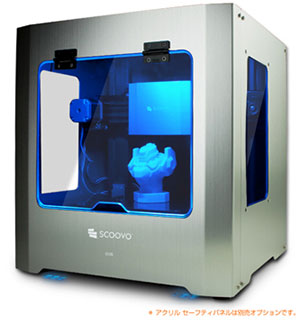In a previous post, we relayed that Japan currently occupies only .3% of the international 3D printing industry, citing Reno Tibke at Akihabara News. Despite this figure, it appears that the tech is still beginning to take hold in the nation. A piece from Reuters, and posted elsewhere, has described a number of entrepreneurs that may or may not represent the possible success of 3D printing in Japan.

Stanley White at Reuters indicates that a variety of Japanese entrepreneurs have taken to starting 3D printer businesses. One such entrepreneur is Junichiro Asami a 38-year-old former management consultant at Deloitte, who is now running a firm, called Innovative Japan Co., that offers 3D printing consultation. Asami has fully embraced 3D printing, saying, “I expect that entire business models and manufacturing systems will have to change to adapt to the 3D printer.” Nobuki Sakaguchi, founder of desktop 3DP retailer Open Cube Inc., believes that 3D printing could bring about a revitalization of Japan’s tradition of “monozukuri“, or “making things”. Mariko Obayashi is a 3D printing entrepreneur who left 26 years at a Canon start Smilelink.
In addition to these small business endeavours, the Japanese government is pursuing other economic plans to stimulate the country’s business sector. The economic ministry, for instance, is pushing for future growth of 3D printing technology with hopes of including 4.5 billion yen ($44 million) in their budget to spur the growth of high-end 3D printers. Additionally, this year, Japan revived a national stimulus program for start-up ventures. The initiative has granted packages to 77% of all companies that have applied, with the number of applicants growing from 15 in April to 2,302 in June.
Tomoko Mitani, a principal analyst at Gartner, is hesitant to say that consumer 3D printing will inspire a trend of Makers who will print their own goods over purchasing from manufactures. Instead, she believes that 3D printing will make manufacturing specialized products more affordable, but doesn’t think that a Japanese 3D printing megacorp will develop. Mitanni also suggested that AM will make its way into the production of medical devices and that new services linked to 3D printing will bring good news to the economy, “Companies are providing 3D printing services over the Internet, which could allow some manufacturers to order goods and have an interesting economic impact.”

Whether or not such deregulation, as White seems to advocate, would actually spur a 3D printing and economic revolution in Japan, I’m not sure. Innovative Japan’s Asami suggests in one interview, if I’m interpreting Google Translate correctly, that manufacturing in the country will blossom as a result of democratization and the intersection of people of various backgrounds. Then, if we return to Reno Tibke at Akihabara News, 3D metal printing is really where the country ought to focus its efforts. I guess we’re all just 7 billion people trying to figure out what’s going on and find our place!
Source: Reuters
Feature Image: The Scoovo Personal 3D Printer sold by Open Cube.

Leave A Comment